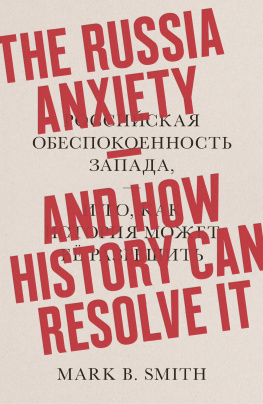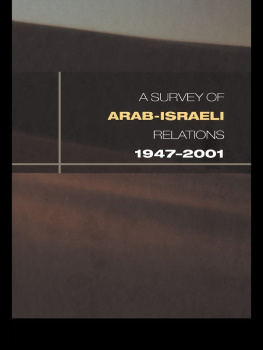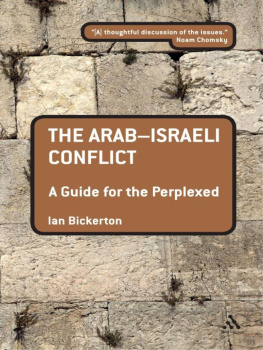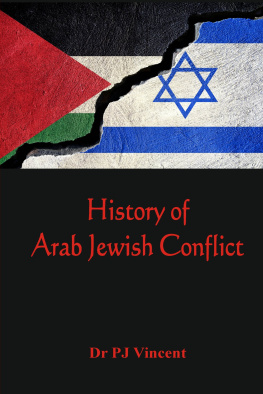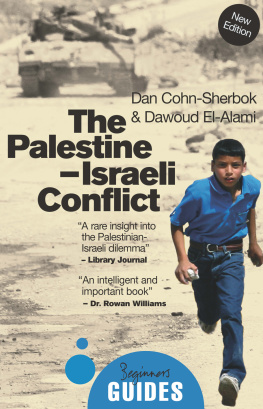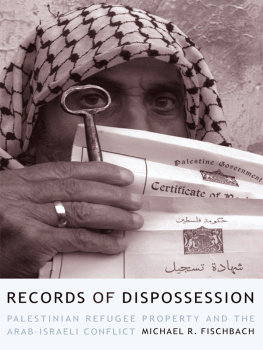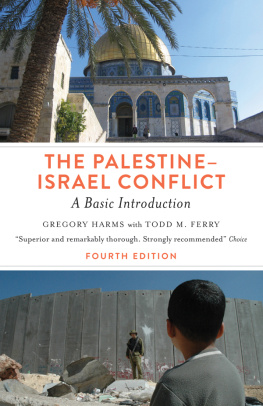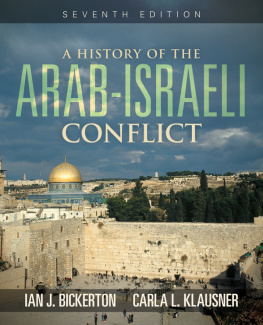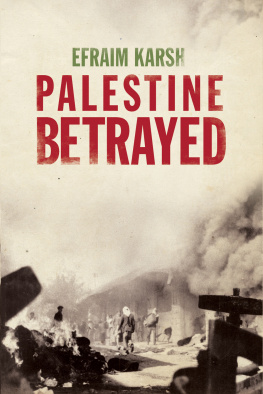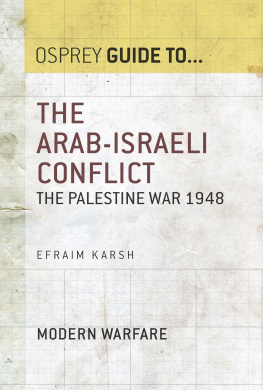

PALESTINE AND THE
ARAB-ISRAELI CONFLICT
PALESTINE AND THE
ARAB-ISRAELI CONFLICT
Ninth Edition
CHARLES D. SMITH
University of Arizona

For Bedford/St. Martins
Vice President, Editorial, Macmillan Learning Humanities: Edwin Hill
Publisher for History: Michael Rosenberg
Acquiring Editor for History: Laura Arcari
Director of Development for History: Jane Knetzger
Developmental Editor: Tess Fletcher
Media Producer: Michelle Camisa
Publishing Services Manager: Andrea Cava
Production Supervisor: Carolyn Quimby
History Marketing Manager: Melissa Famiglietti
Project Management: Jouve
Cartography: Mapping Specialists, Ltd.
Photo Editor: Sheena Goldstein
Permissions Editor: Mark Schaefer
Senior Art Director: Anna Palchik
Text Design: Joyce C. Weston Design
Cover Design: John Callahan
Cover Images: Private Collection, Archives Charmet / Bridgeman Images (background); Yann Arthus-Bertrand / Getty Images (inset)
Composition: Jouve
Printing and Binding: RR Donnelley and Sons
Copyright 2017, 2013, 2010, 2007 by Bedford/St. Martins.
All rights reserved. No part of this book may be reproduced, stored in a retrieval system, or transmitted in any form or by any means, electronic, mechanical, photocopying, recording, or otherwise, except as may be expressly permitted by the applicable copyright statutes or in writing by the Publisher.
Manufactured in the United States of America.
1 0 9 8 7 6
f e d c b a
For information, write: Bedford/St. Martins, 75 Arlington Street, Boston, MA 02116 (617-399-4000)
ISBN 978-1-319-09851-3
Acknowledgments
Text acknowledgments and copyrights appear at the back of the book on pages , which constitute an extension of the copyright page. Art acknowledgments and copyrights appear on the same page as the art selections they cover.
About the cover: Background: Map of the Holy Land, published in Amsterdam, 1629. Inset image: The Separation Wall in the West Bank.
PREFACE
A s I write this preface to the ninth edition of Palestine and the Arab-Israeli Conflict in May 2016, tensions related primarily to Iran and Syria overshadow Palestinian-Israeli and broader Arab-Israeli issues. Israel has entered into a tacit alliance with Sunni Arab states of the Arabian Peninsula, led by Saudi Arabia, to overthrow Syrias Bashar al-Assad and his Shii regime, an effort aimed as well against Iranian influence in the region. This has meant funding jihadist groups opposed to Assad while at the same time declaring their fear of the most powerful movement, that of the Islamic State (ISIS), whose range extends into Iraq. Russia backs Assad, while the United States trains and arms forces opposed to his rule. This conflict has caused an enormous refugee crisis that has engulfed European countries as well as Lebanon, Jordan, and Turkey, as nearly five million Syrians have fled the strife, now in its fifth year.
Similarly, in Yemen, a Saudi-sponsored coalition has intervened in a civil war to block the rise of a Shii government, claiming it also is backed by Iran, using foreign troops for hire from Sudan and South American countries such as Colombia. Meanwhile, the United States arms the Saudi forces with supplies that include cluster bombs. The resulting devastation has caused thousands of civilian casualties and enabled the al-Qaida branch in Yemen to expand its control of territory; reports from the Pentagon indicate American troops are now in Yemen to combat al-Qaida. In Iraq, the political chaos created by the American invasion of 2003 continues as the United States trains Iraqi forces to confront ISIS, whose territory includes the city of Mosul with a population over one million. Shii-Sunni divides hamper this effort and reflect the broader Shii-Sunni confrontation that engulfs the region, spurred in part by a nuclear arms agreement reached between Iran and the major powers, the United States, France, Germany, Russia, and China. The accord was signed despite furious opposition from Israel and Saudi Arabia and its allies who still seek to undermine it.
In the midst of this turmoil, right-wing Israeli governments have pushed further settlement expansion in the old city of East Jerusalem as well as in greater East Jerusalem and the West Bank. Discord has erupted over access to the Temple Mount/al-Haram al-Sharif as more Jews seek to pray there in violation of existing agreements. In response, many young Palestinians, often armed with scissors, screwdrivers, or knives, have attacked individual Israelis as well as troops and have been killed in the process, inflaming tensions within Israel itself. The Palestinian Authority based in Ramallah has no authority over East Jerusalem, and Palestinians generally have lost faith in its leadership while feeling abandoned by Arab states, including Egypt, because of their focus on the confrontation with Iran. Hamas, which broke with Syria and thus Iran over the Assad governments response to Arab Spring protests, remains isolated and its infrastructure devastated as the result of the Israeli assault of 2014 (see ).
Under these circumstances, the Arab-Israeli conflict for the moment has taken a backseat, the result of the Sunni Arab-Israeli alliance against Iran and its proxies, leaving the Palestinians to fend for themselves. At the same time, the fate of Arab states such as Iraq, Syria, Yemen, and Libya remains uncertain, beset by civil strife often defined by Muslim sectarian divisions and exacerbated by the intervention of external forces funding or opposing jihadist groups. Whether these states can be reformulated as stable entities remains doubtful.
These recent events underscore the need for a historically sound and current treatment of the Arab-Israeli conflict with regard to Palestine and the broader Middle East. When I introduced my course on the Arab-Israeli conflict, I could not find a satisfactory text for the college student or the general reader. As a historian, I envisaged a book that, in addition to comprehensive coverage of recent history, gave equal weight to the period before Israeli independence in 1948 because it was during this earlier period that Zionism claimed Palestine and Palestinian resistance began. The pre-1948 history of Palestinian-Zionist relations reveals the foundations of subsequent Arab and Israeli attitudes and suggests ways to evaluate todays crises with reference to events that extend back to World War I and earlier. I decided to write such a book, which resulted in the publication of the first edition of Palestine and the Arab-Israeli Conflict in 1988. From its inception, this book has given equal emphasis to the modern histories of both Palestine and Israel, beginning with extended treatment of the nineteenth century, the critical era of World War I, and the period of British mandatory rule down to 1947 as points of departure for the era since Israels independence. Later, as it became clear that students would benefit from reading primary sources from the conflict for themselves, I added documents throughout the book as well.
Next page






